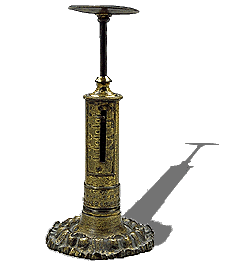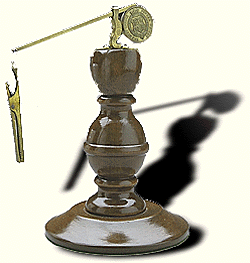
![]()
Postal Scales
National Postal Museum collection. CMC 1984.118.1-2
These two types of scales were in general use around the 1850s. The examples shown here are of particular interest because their provenance is known. They were the personal possessions of William Charles Henry Copeland, postmaster at Cooksville, Ontario, from 1880. After his death, his widow succeeded him (1948) as postmistress there.
One of the scales is of the "Bismar" type. It bears the inscription The Post Office Letter Weight on one side and, on the other, For Rowland Hill's Plan of Penny Postage. For H. Hooper, 12 August 1839 and in smaller letters Silvester & Co. 27 Strand. This inscription commemorates the introduction of a new system of charging for postage; that is, by weight of the letter. Previously, the cost of sending a letter was based on the distance it was to travel. The original design for this type of scale was registered on August 12, 1839. It was manufactured in four different models. Rowland Hill introduced the new method, which gave rise in 1840 to the first postage stamp, the "penny black".

The spring scales of the candelabra type also appeared around 1840, with the introduction of penny postage. The example shown here was one of the first models manufactured by Robert Walter Winfield of Birmingham. It bears the inscription No. 170/ January 13 1840/ R.W. Winfield. This corresponds to the date of the registration of the design at the Office of Registry of Designs, in London. Winfield, together with the brothers Joseph and Edmund Ratcliff, was one of the best-known manufacturers of candelabra scales. Production continued on these scales, which were usually made of bronze, copper, silver or ivory, up to the 1870s.

